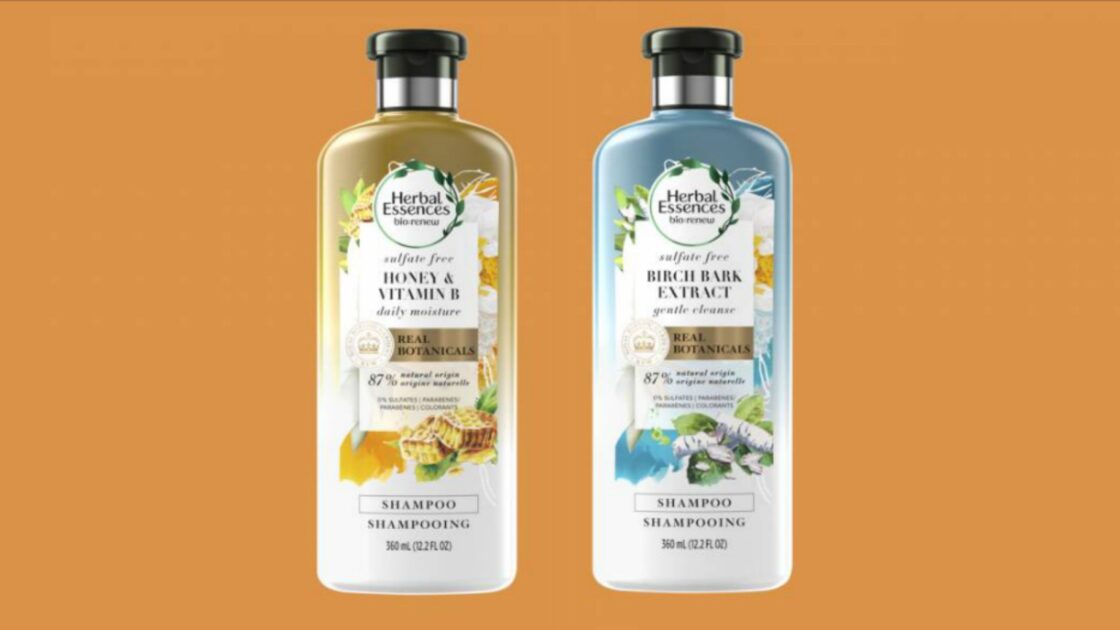How This 1971 Shampoo Brand Is Finally Living Up to Its Natural Image
Times, they are-a-changin', especially for Procter & Gamble.

If you’re old enough to remember television commercials from the 1970s, there’s a good chance you remember Procter & Gamble’s Clairol Herbal Essences animated spot from the early end of the decade. Wildflowers, symbolic of the decade’s counterculture, proliferate as a long-haired fairy-looking woman bathes in fresh spring water, cleansing her hair in the purity of nature.
By the end of the decade, the brand was using real people in the commercials — the lead now an independent, working woman who loves her hair, but it’s still saturated in a message of purity, like the slimy green ‘poo oozes out of somewhere perfectly fragrant and ready to make your locks shine.
By the 1990s, the brand had posited itself as better — or at least as good as –sex, with women moaning in ecstatic tangle-free, bouncy bliss as the brand once again buoyed its hero ingredients as part of an “organic experience” replete with gifts direct from nature.
Except, the product wasn’t organic. It was barely made from the wildflowers and the natural ingredients it boasted. Still, the 1970s bottles were so iconic you can buy them today from collectors for upwards of $80 a bottle.
But if you’re expecting more than the throwback kitsch factor — like a shampoo that’s as pure as mountain air and wildflowers– Herbal Essences isn’t you’re product. At least, not those old bottles. That’s all about to change.
In 2015, Procter & Gamble found its iconic shampoo didn’t rank well on the Environmental Working Group’s (EWG) Skin Deep Database. Its customer focus groups were as lackluster as hair that hadn’t been washed in a mountain stream.
“It really opened our eyes,” P&G’s Senior Scientist Rachel Zipperian, who at the time was doing product research for the Herbal Essences brand, told Bloomberg. “That was when we took a stand.”
Instead of fighting EWG, or denying the link between the ingredients with poor EWG ranking to numerous health issues, the brand decided instead to reformulate and make a shampoo its customers would want to use.
Like recent changes to the food system as a result of consumers seeking brand transparency, healthier ingredients, and safer products, the skin care industries are changing, too. Earlier this year both Dove and Covergirl announced their lines were now certified cruelty-free. Stores like Target and Walmart are stocking free-from brands that leave out the toxins like parabens and phthalates.
For P&G’s Herbal Essences, the shift to ‘cleaner’ shampoo took two years and ten different formulations to remove ingredients including sulfates, which are used for lather but linked to skin conditions and other health issues; fragrances, which are known allergens, irritants, and linked to respiratory issues and even some types of cancer; and a preservative called methylisothiazolinone, linked to neurotoxicity.
Now, the mountain air and wildflower adorned shampoo bears the EWG-verified label, a verification that’s positioned on fewer than 2,000 items currently. For EWG, this marks the first major brand to display its badge, and according to EWG co-founder Ken Cook, P&G’s move to reformulate “speaks volumes about today’s consumer-driven interest in clean beauty,” as well as P&G’s commitment to its customers, he told Bloomberg.
EWG hopes it will set a precedent for other iconic brands to look at the Skin Deep Database as guidepost toward new sales and new customers.
For P&G, the move could help it shake off its chemical cocktail image. And while it may not be made from pure wildflowers and mountain stream water yet, it seems to be getting closer than ever before.
“I can think of faster and easier ways for a huge company like P&G to refresh an iconic brand,” Cook said. The new products are set to go on sale in January.
Find Jill on Twitter and Instagram
Related on Organic Authority
Do Collagen Supplements Work on Wrinkles and Sagging Skin?
5 Foods That Offer Sun Protection From the Inside Out
Why Dermaplaning is Your New Anti-Aging BFF

